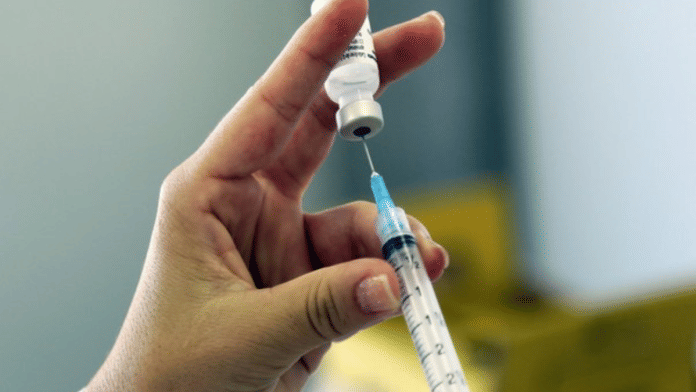In contemporary healthcare, it is increasingly vital to view citizens not merely as beneficiaries but as consumers of medical services. This perspective allows consumers to play a more proactive role in their health, signifying a shift from passive recipients of medical services to actively engaged consumers choosing the best care for their needs.
Viewing people as consumers of medical services has the potential to enhance the quality of care and allocation of resources, and ultimately contribute to the improvement of public health.
Take the following three benefits of this approach:
- Patient-centred care: seeing citizens as consumers enhances the perspective of patient-centred care. When patients are viewed as consumers their decision-making power – in terms of their treatment, choice of healthcare provider and therapeutic approach – is recognized.
- The appropriate allocation of healthcare resources: considering service users as consumers can help balance demand and supply from the standpoint of healthcare finance and resource allocation. This ensures that resources are allocated to the most-needed services.
- The improvement of healthcare service quality: adopting a consumer perspective can foster the improvement of healthcare service quality. When patients make more conscious choices about their treatment, healthcare providers are compelled to offer better services.
To realise this consumer-centric healthcare model, the use of life-course data is essential. This data captures health information throughout an individual’s lifetime, encompassing a wide range of information, such as lifestyle habits, genetic background and environmental factors, at each stage of life. By integrating and analysing these data points, personalized preventive measures and treatments can be provided enabling healthcare services to respond more precisely to individual consumers’ needs.
The design of the “healthcare experience” is also indispensable for consumer-centred healthcare services. This approach aims not merely to treat the disease but to ensure that patients have a positive overall experience. Design thinking is a powerful tool for improving services and optimizing experiences from the consumer’s perspective, with data governance and data standardization being crucial for success.
Data governance guarantees data quality, privacy protection, and security, while standardization ensures data compatibility and availability. These frameworks enable appropriate utilization of each consumer’s data, allowing for the design of optimized healthcare experiences.
Considering these concepts, we can envision a future where consumer-centred healthcare evolves. With the advancement of technologies such as artificial intelligence (AI), blockchain, and the Internet of Things, it becomes possible to offer more personalized and efficient care to individual consumers. These technologies also enhance transparency in healthcare and allow consumers to gain more control over their medical information.
As healthcare shifts towards a consumer-centric approach, we begin to see a way towards the vision of a sustainable healthly society outlined in the sustainable development goals (SDGs). This vision aims for a world where all people enjoy health and wellbeing and make decisions about their health. Towards this vision, we need to continue developing this new perspective.
Viewing healthcare from a consumer perspective has significant implications in both preventive medicine and public health. From the perspective of preventive medicine, the use of life-course data enables early interventions for disease prevention and management of risk factors. By using data on lifestyle habits and genetic background, individual consumers can obtain information that encourages behavioural changes to prevent diseases.
From a public health perspective, this consumer-centric model contributes to the important goal of reducing health disparities. By tailoring healthcare services to consumer needs and experiences, the opportunity for all people to receive high-quality care expands. Moreover, this model potentially promotes information sharing and community participation to strengthen public health efforts. These perspectives are helpful if healthcare is to meet the vision laid out by the SDGs, aiming for a world where all people enjoy health and wellbeing and make decisions about their health.
Central to this new model of healthcare is the empowerment of consumers. As patients become more active participants in their care, they are also likely to become more informed and conscious of their health status and choices. This heightened awareness can facilitate early detection of potential health issues, as well as more prompt and effective responses to such issues.
Transitioning to a consumer-centric model requires a robust interdisciplinary approach. It involves various fields including public health, behavioural sciences, data science, design thinking and more. By bridging these disciplines, we can create a more holistic healthcare system that addresses not only physical health issues but also the underlying social, economic, and environmental determinants of health.
As mentioned, technology plays a critical role in actualizing a consumer-centric model. Advanced tools like AI can be used to analyse large volumes of data and derive insightful conclusions. Moreover, technologies like blockchain can secure data privacy while IoT devices can collect real-time health data, ensuring a more dynamic and responsive healthcare system.
Ultimately, the shift to viewing citizens as consumers of medical services could revolutionize the healthcare sector. However, for this vision to materialize, systemic changes and continued innovation are required. It calls for a patient-driven, data-centric and technology-enhanced model, which, if successfully implemented, could lead to improved health outcomes and a more sustainable health society.
This article was originally published in the World Economic Forum.
Also Read: Most infectious diseases in humans have animal origins. Active monitoring can…






